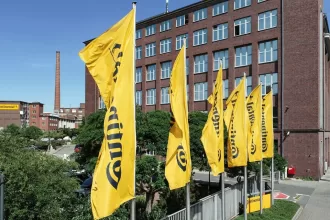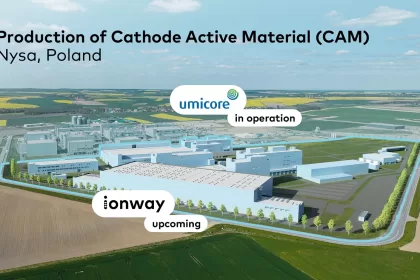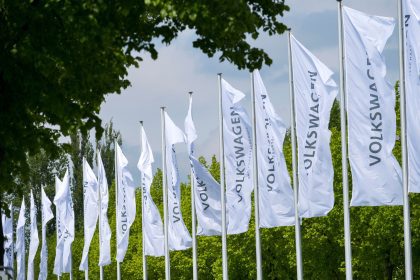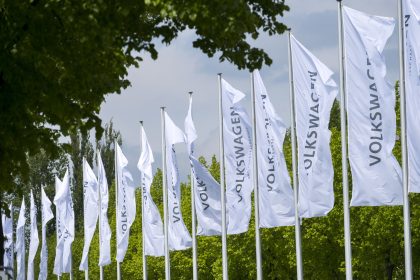- “In China, for China”: New China strategy with significantly higher value creation in China aims for stronger local market and customer orientation. Substantially increased in-house development and software capacities as well as local partnerships form the basis for new products with state-of-the-art technologies.
- Cost parity with local competition: The Volkswagen Group is aiming for a 40 percent cost reduction with its locally developed China Main Platform (CMP). This is a key component in achieving cost parity with local competition in the price-sensitive segment for battery electric (BEV) compact vehicles.
- Market position as a leading international manufacturer: The Volkswagen Group intends to increase its proportionate operating result to around EUR 3.0 billion by 2030, including the fully consolidated Anhui joint venture.
- Unique position: Solid combustion (ICE) business as highly profitable basis for the flexible transformation towards intelligent connected vehicles (ICV).
- Tapping into new profit pools: Profitable growth with China-specific product portfolio in dynamically developing market for hybrid and fully electric vehicles (NEV).
- Volkswagen Group CEO Oliver Blume: “China is our second home market. We continue to drive our strategy forward systematically and are going on the offensive with its execution. We focus on our Chinese customers’ expectations and the accelerated time-to-market of our products. At the same time, we are pushing pioneering technologies, increasing cost efficiency, and deepening local partnerships.“
Volkswagen launches the next phase of its transformation in China. At its China Capital Markets Day in Beijing, Volkswagen Group presented its strategy update for the Chinese market. The focus is on its target to strengthen tech capabilities and reduce costs in the strongly growing market. The Group plans to achieve cost parity with local competition in the compact car segment by 2026 and gain further momentum through a re-aligned strategy and an efficiency program that was launched already.
In addition, the company underlined its commitment to its “in China, for China” strategy: It presented measures to cater even better to the needs of Chinese customers, accelerate model developments and time-to-market as well as significantly reduce costs. In addition, the aim is to better harness the innovative power of the market and increase local value creation through more in-house development capabilities and strong local partnerships. As a result, the Group aims to strengthen its position as the #1 international OEM in the Chinese market and has set ambitious targets until 2030: Approximately 4 million vehicles sold and growth in proportionate operating result to around EUR 3.0 billion, including the fully consolidated Anhui joint venture.
“Over the past 40 years, we have established a robust and very successful business in China. China is a very important market for us and will remain so. There are approximately 50 million of our vehicles on Chinese roads today, and we sell one in three cars worldwide in China. We are therefore proud to call China our second home market,” said Oliver Blume, CEO Volkswagen Group at the Capital Markets Day in Beijing. “Looking to the future, we are systematically driving forward our ‘In China for China’ strategy. The course is set, and we want to benefit more from the market’s growth momentum from 2026. The focus will be on the consistent implementation of the strategy, further strengthening our customer orientation and an accelerated model development. Together with our partners, we are also increasing our technological competitiveness and significantly reducing costs.”
Achieving cost parity to local BEV competitors in the compact vehicle segment
With its strategy, Volkswagen aims to achieve cost parity with local competition for entry-level compact vehicles by 2026. This segment is expected to account for more than 50 percent of the total market in the future.
To benefit from this growth, the Group will extend its full-electric portfolio to the compact segment through its Volkswagen brand and based on its China Main Platform (CMP). The CMP aims to reduce costs by 40 percent by 2026, in particular through the zonal electrical/electronic (E/E) architecture developed in collaboration with XPENG and competitive battery technology. In addition, the use of the “China Electrical Architecture” (CEA) will further standardise the digital architecture and thus achieve higher cost efficiency. By implementing the new CEA, the Volkswagen brand is considerably accelerating its development speed.
In the dynamically growing Chinese market, Volkswagen is thus able to deliver innovations to customers faster. Thanks to the new local structure with the Volkswagen Group China Technology Company (VCTC), the Group’s own research and development centre in Hefei, the Group can shorten the time-to-market for new, local products by 30 percent.
With the VCTC, Volkswagen is bundling all development units and decision-making processes for vehicles destined for the Chinese market in Hefei. This reduces the interfaces between different areas and increases efficiency. Coordination takes place in the same time zone and with the sole focus on the local market. In addition, the Tech Company brings together vehicle and component development as well as procurement right from the start of the development process. Simultaneous work saves additional time and enables an optimised cost structure. In addition, the VCTC maximizes cost competitiveness by focusing on local concepts on a vehicle-, platform-, module- and system-level. This includes “off-the-shelf” modules made by local suppliers, where reasonable, and leveraging global Volkswagen Group technology, where desirable.
Oliver Blume said: “With this increased efficiency and speed, significant economies of scale and strong cost position, Volkswagen continues to be profitable and cash-generative, even in a challenging market. At the same time, we are ensuring our ability to finance investments in the future while securing a robust financial position.”
Bolstering competitive position through local partnerships and innovation
The Group is taking deliberate steps to enhance efficiency and lay the groundwork for future growth in China, particularly through strengthening its tech and software stack, focusing on its local development capacities and its partnerships with local tech companies and manufacturers such as Horizon Robotics, Thundersoft and XPENG.
This way, Volkswagen is driving forward the digitalization of its model portfolio through the China Electrical Architecture developed jointly by VCTC and CARIAD China with the Chinese electric vehicle manufacturer XPENG. The aim is to fully align technology and digital services with market trends in order to cater to the wishes of Chinese customers more quickly and in a targeted manner. This strengthens the software-orientated approach and promotes the development of cutting-edge functions, such as automated driving and next-generation connectivity functions.
China is driving innovation for autonomous vehicles, with Level 3 and higher autonomous driving expected to reach a penetration rate of 56 percent by 2030.
Volkswagen’s improved competitive position is also reflected in ambitious mid- and long-term targets: The Group aims to continuously increase its proportionate operating result to more than EUR 2.0 bn by 2027, with the goal of achieving around EUR 3.0 bn by the decade’s end. The Group has set ambitious sales targets in China of approximately 4 million vehicles by 2030, corresponding to a market share of about 15 percent. Every second vehicle sold is targeted to have an electric drive by 2030.
“The Volkswagen Group is focusing on an ‘in China for China’ approach in the region. This means more local development, new tech partnerships and greater speed of implementation. At the same time, we are accelerating our electric offensive with additional products for new segments. In this way, we are taking advantage of the opportunities in the rapidly growing e-market,” said Ralf Brandstätter, Member of the Group Board of Management for the China region and CEO of Volkswagen Group China. “Profitability has top priority in all our projects and initiatives. With a cross-brand efficiency program and consistent cost management, we will further strengthen our economic competitiveness in China sustainably. The region will thus continue to make a strong contribution to the Group’s earnings and cashflow in the future.”
ICE to fund the tech transformation
Volkswagen’s 40-year presence in the market provides a strong basis for future growth in China, as its high visibility and acceptance translates into a strong level of trust from local customers.
The company plans to deliver state-of-the-art vehicles in all key segments: ICE, PHEV and BEV – and also in ICVs in the future. This growth trajectory is underpinned by the momentum in new electric vehicles (NEV). Already over the next three years, the Group and its brands will launch 40 new models in China, half of which will be electrified. These include at least eight of the planned China-specific BEV models from partnerships with XPENG and SAIC, as well as Volkswagen brand vehicles based on the new China Main Platform. Until 2030, more than 30 BEV models are to be introduced to the market.
It is Volkswagen’s target to be and remain the leader amongst international OEMs and to position the company in the top 3 in the Chinese market. This ambition is in line with the anticipated growth of the Chinese market that is characterized by several key trends, potentially unlocking new profit pools in the automotive industry in the coming years.
The total passenger car market is expected to grow to more than 28 million vehicles by 2030, which is around six to seven million more vehicles than today. In addition, the NEV market is expected to reach a share of about 75 percent by the end of the decade – almost three times the share in 2023.
The Volkswagen Group intends to benefit from this market potential with a mix of technologically leading ICE vehicles and a steadily growing NEV portfolio. It can also use its high-margin ICE fleet, which is gradually being hybridised, to finance investments in the next technological leap towards intelligent, connected vehicles (ICV).















